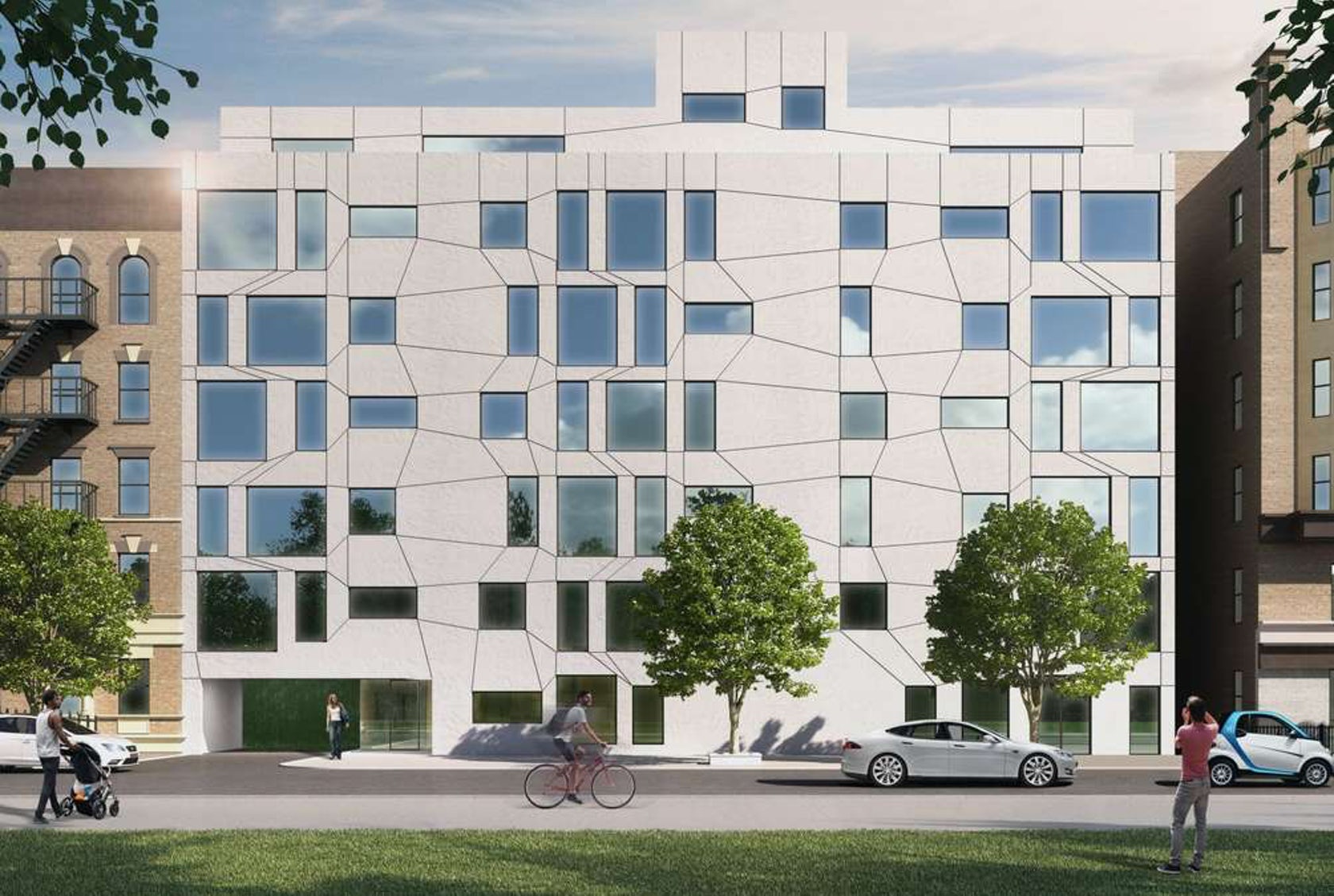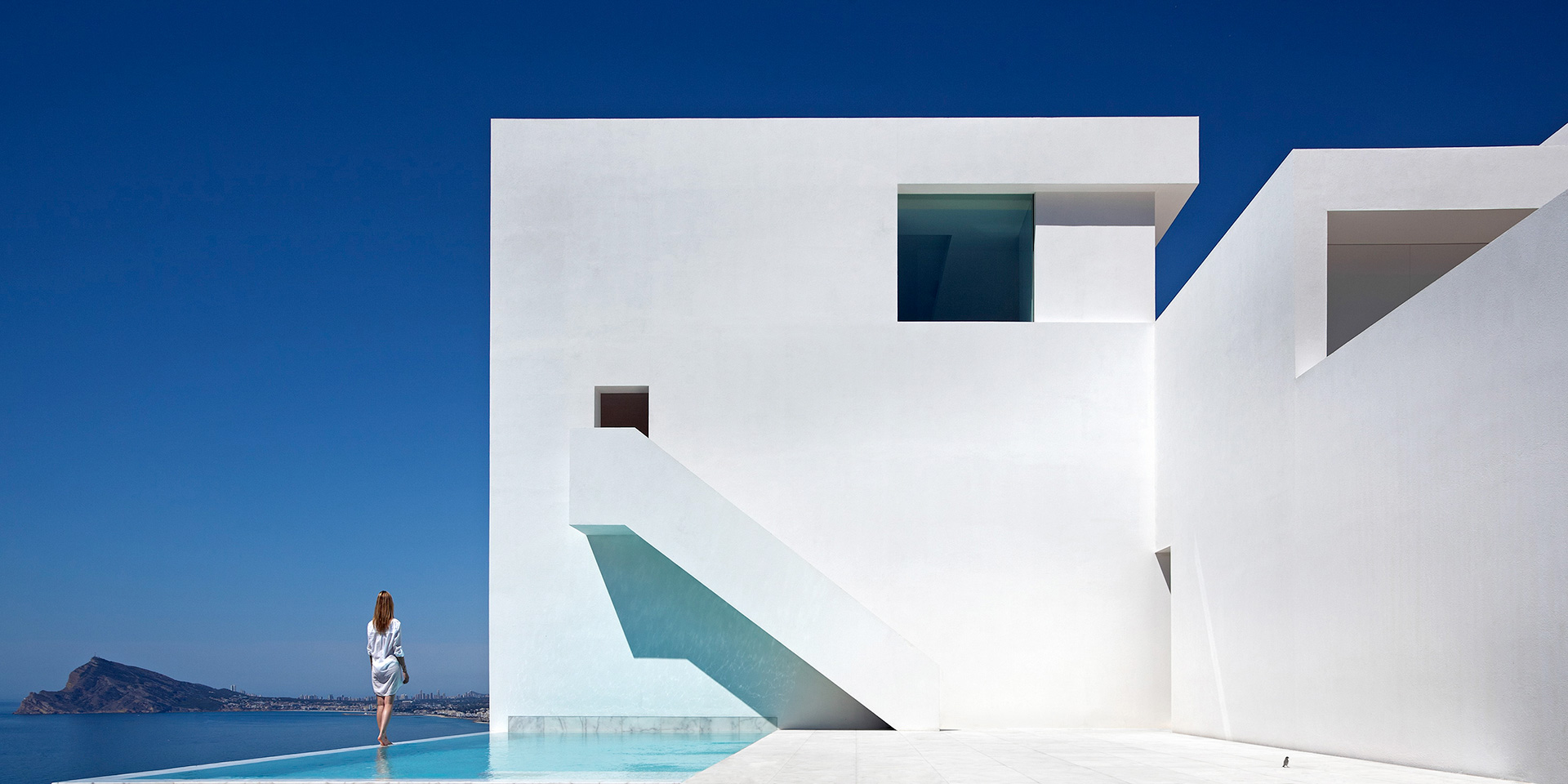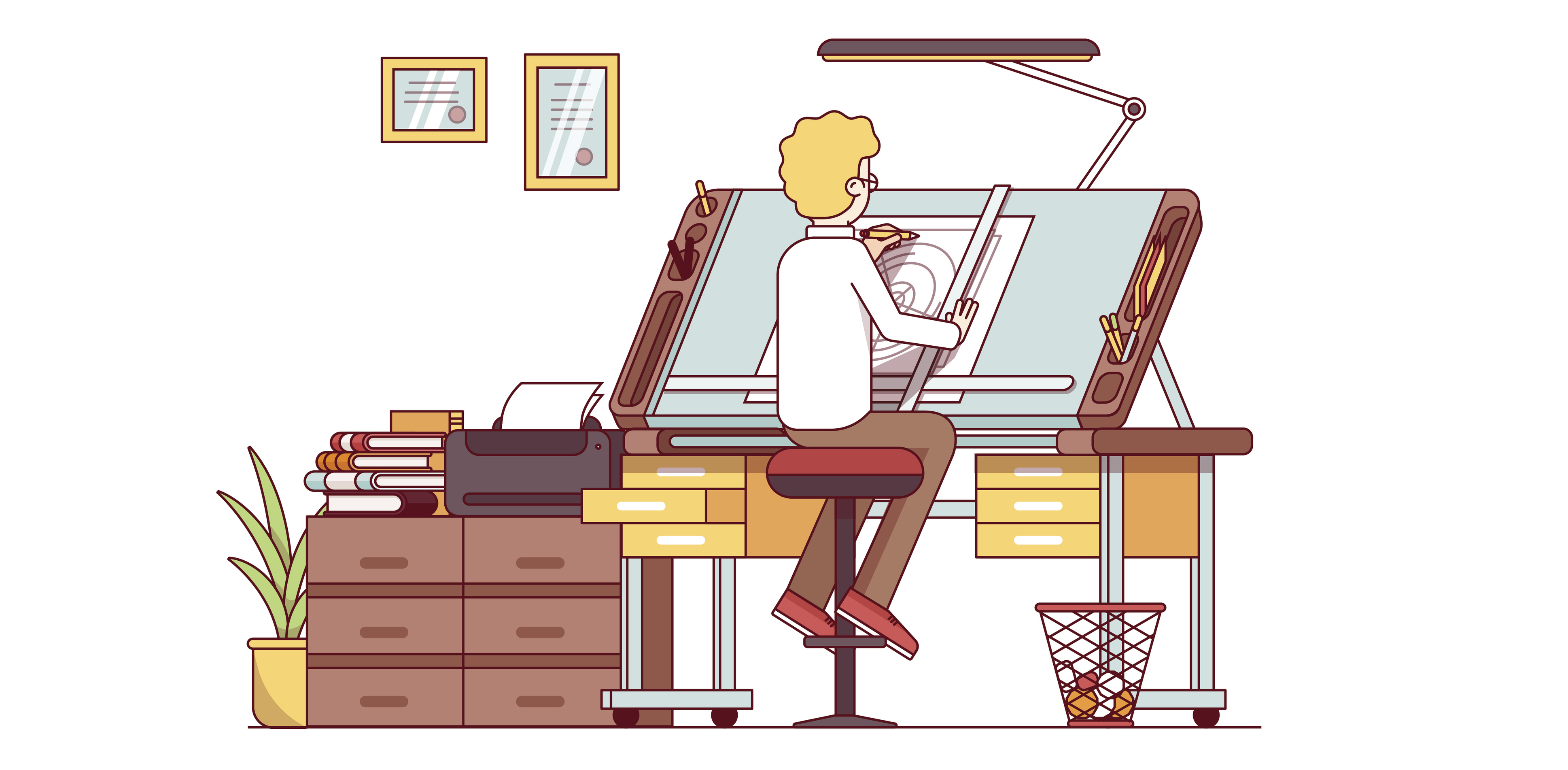Architects: Showcase your next project through Architizer and sign up for our inspirational newsletter.
Have you ever met siblings, who despite being very, almost uncannily similar, are determined to distinguish themselves in every way possible? In order to set them apart, you really have to dig a bit deeper. That’s kind of like stucco and EIFS (Exterior insulation and finish system).
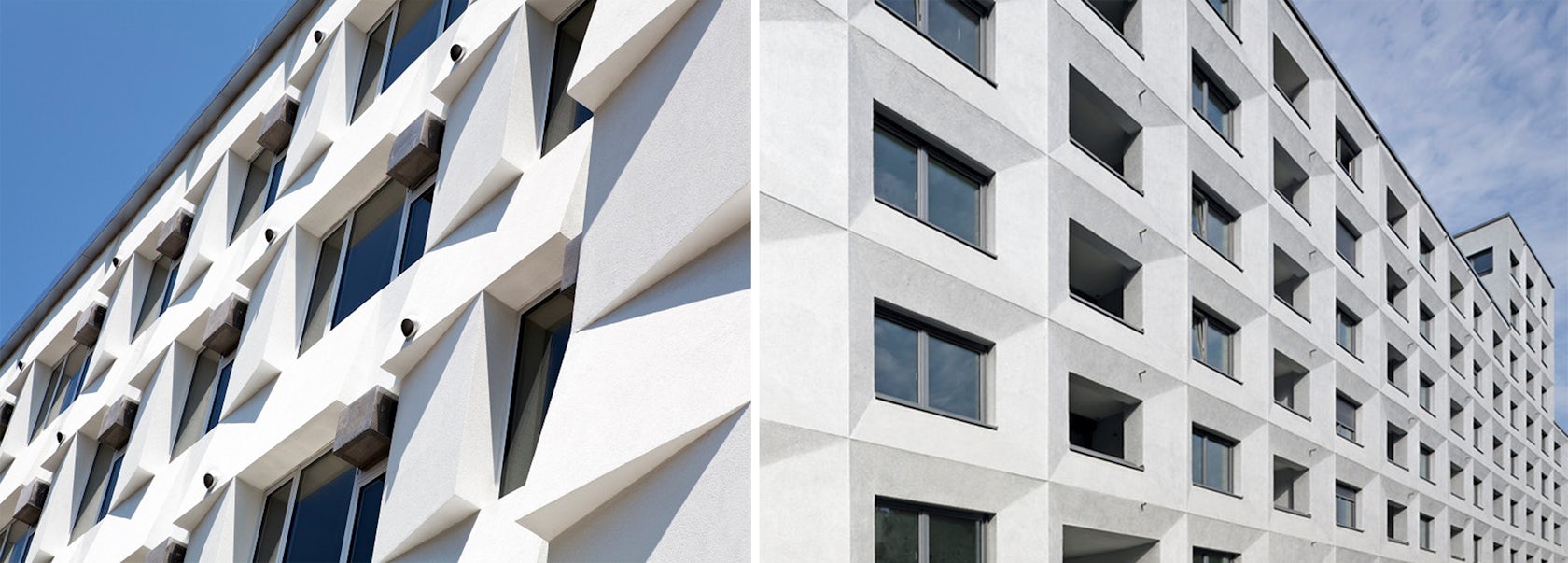
Left: EIFS façade at Knickerbocker Commons Passive House Apartment Building by Chris Benedict R.A. in Brooklyn, New York; image via EIMA; Right: Stucco façade at TassiloHof by 03 Architekten GmbH in Munich, Germany, image via Haslreíter
While some of stucco’s most fervent advocates might disagree, it can be very difficult to distinguish between stucco and EIFS by simply observing them on the face of a building. In fact, they can look so similar that many manufacturers recommend pressing on the buildings rather than looking at them, in order to tell them apart. Further, the reason that you might choose to specify both traditional stucco and EIFS are actually very similar: they both offer the possibility of creating a continuous and seamless building envelope and can be fashioned in limitless shapes and colors. They are both incredibly versatile.
Their close running in the competitive building-product race is what makes this such an important comparison to make. As a result of these similarities, the details that will lead you to select one over the other are a bit more subtle than usual, and often quite challenging to tease out.

Vitra Design Museum by Gehry Partners; image via ArchDaily
What is stucco?
Before continuing on in this article, we recommend that you take a few minutes to look over this week’s kick-off piece, How to Specify: Stucco. It will provide you with a great foundation on the architectural usages of stucco and set you up to properly understand this comparison.

Left: two-coat stucco assembly diagram; image via International Masonry Institute; right: three-coat stucco assembly diagram; image via International Masonry Institute
In summary, “stucco siding is a mixture of Portland cement, sand and water. It’s not radically different from concrete. It is applied in a combination of layers with a standard base coat and a refined finish coat.” This means that stucco can be applied directly onto brick or concrete masonry walls, as well as timber-framed walls, often without a vapor barrier or insulation in between. Versatile as this may be, it has also led manufacturers to experiment with alternatives that boast an additional set of advantages.

The East Coast Building by Blitstein Design Associates features a multi-colored, bespoke EIFS façade; image via EIMA
What is EIFS?
Since the late 1960s, when EIFS was first introduced in the United States as a cladding material on commercial buildings and homes, it has commonly been used as a replacement to traditional stucco. Today, they are some of the most tested and well-researched cladding materials in the construction industry. As a multi-layered product that is much newer than traditional stucco, an EIFS modifies certain elements of cement stucco to create a product with some exciting flexible assets.
According to the EIFS Industry Members Association (EIMA), “an Exterior Insulation and Finish System (EIFS) is a non-load bearing, exterior wall cladding system that consists of an insulation board attached either adhesively or mechanically, or both, to the substrate; an integrally reinforced base coat; and a textured protective finish coat.” While this may sound extremely complex, an EIFS can first be boiled down into a polymer-based or non-cementitious coating (sometimes referred to as “synthetic stucco”), that is fixed on top of an insulation panel.

Typical EIFS configuration; image via EIMA
According to the EIMA, an EIFS typically consists of the following components:
- A water-resistive barrier that covers the substrate.
- A drainage plane. Placed between the WRB and the insulation board, this element is most commonly achieved with vertical ribbons of adhesive.
- Insulation board. This layer is typically made of expanded polystyrene (EPS), which is secured either with an adhesive or mechanically to the substrate.
- Glass-fiber reinforcing mesh. This layer is typically embedded in the base coat, which helps eliminate cracks to the final wall.
- Water-resistant base coat. This layer, which is often embedded with glass-fiber reinforcing mesh, is applied on top of the insulation and serves as a weather barrier.
- Finish coat. Usually colorfast and crack-resistant acrylic co-polymer technology.
The third layer — insulation board — is that which can be manipulated to create an endless set of desirable architectural features. EPS boards can be cut, rasped and formed into just about any shape, and then placed on top of the base layer.
How should I choose?
As with most building materials, your choice will depend on the context of your building as well as what you are ultimately trying to create.
Traditional hard-coat stucco is strong and extremely durable because it essentially covers your home in a layer of rock. As a result, stucco will hold up better to dings, hail, woodpeckers, and anything else that may come knocking. Sometimes described as porous, traditional stucco also permits moisture to move freely, in and out of the wall cavity, which means that stucco is a great choice in extremely moist climates.

© Herzog & de Meuron
VitraHaus by Herzog & de Meuron features a stucco façade with a smooth, dark finish
Unfortunately, even when stucco walls are properly equipped with expansion joints and control joints, stucco can crack on the field of the wall, which sometimes leads designers to break up stucco walls into smaller components. Properly installed EIFS does not typically produce cracks because of the reinforcing glass-fiber mesh that is embedded in the base coat. If EIFS does crack, the cracks will be smaller and typically around penetrations such as windows and doors, where proper joint provisions were not provided.
EIFS is palpably softer than traditional stucco, which is why manufacturers recommended pressing on the a building face, in order to identify whether it is composed of stucco or synthetic. However, the material boasts better insulation and higher energy efficiency as a result of its multiple layering. It also features an exterior finish that will not yellow or fade (as is often the case with traditional stucco). In contrast, EIFS is more like to be damaged by water. Once water penetrates behind the EPS board, it will be more difficult to drain it back out.
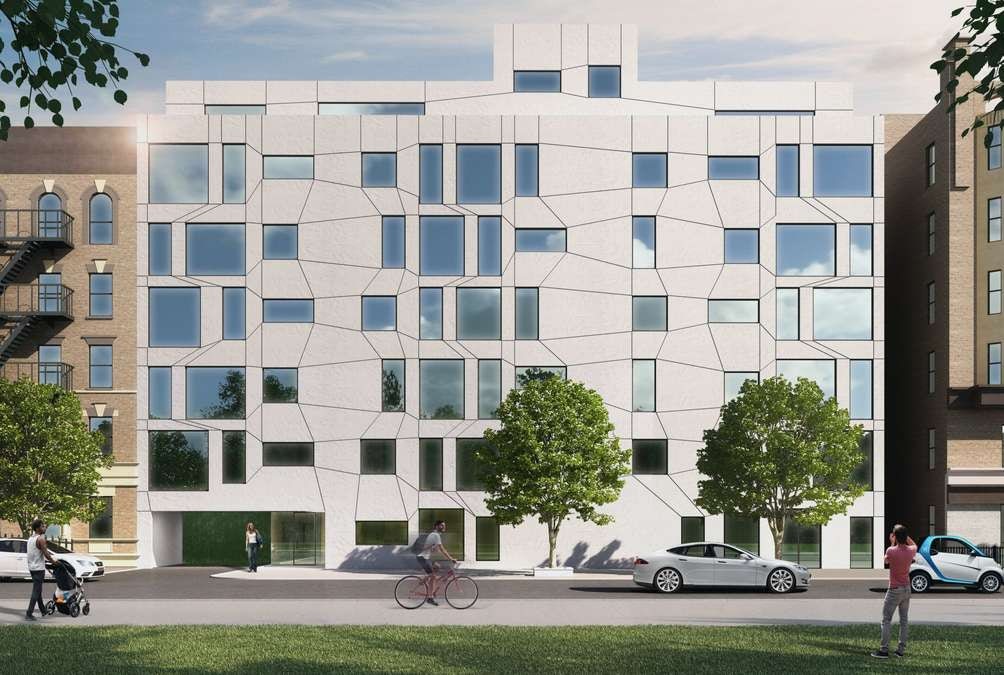
Currently under construction in Harlem, New York, Perch Harlem Passive House by Chris Benedict R.A. is the first market-rate passive house in Manhattan. The building features an EIFS façade.
As mentioned at the outset of this article, both materials can be forged into a variety of shapes and colors. In addition, both are fire resistant, good barriers to sound and can even be fairly comparable in price. If you are going for bespoke accents or you are working in extreme climate conditions, you may choose to work with EIFS due to its highly flexible aesthetic and insulating qualities. If you are designing in an extremely wet climate, you may choose to work with traditional stucco.
Trying to choose between the immense possibilities of both EIFS and Stucco can be very challenging. If you find yourself in a bind, both the EIMA and the Stucco Manufacturers Association are a great place to continue your investigtion beyond this article.
Looking for the perfect stucco for your next project? Search for it on Architizer’s new marketplace for building-products. Click here to sign up.
